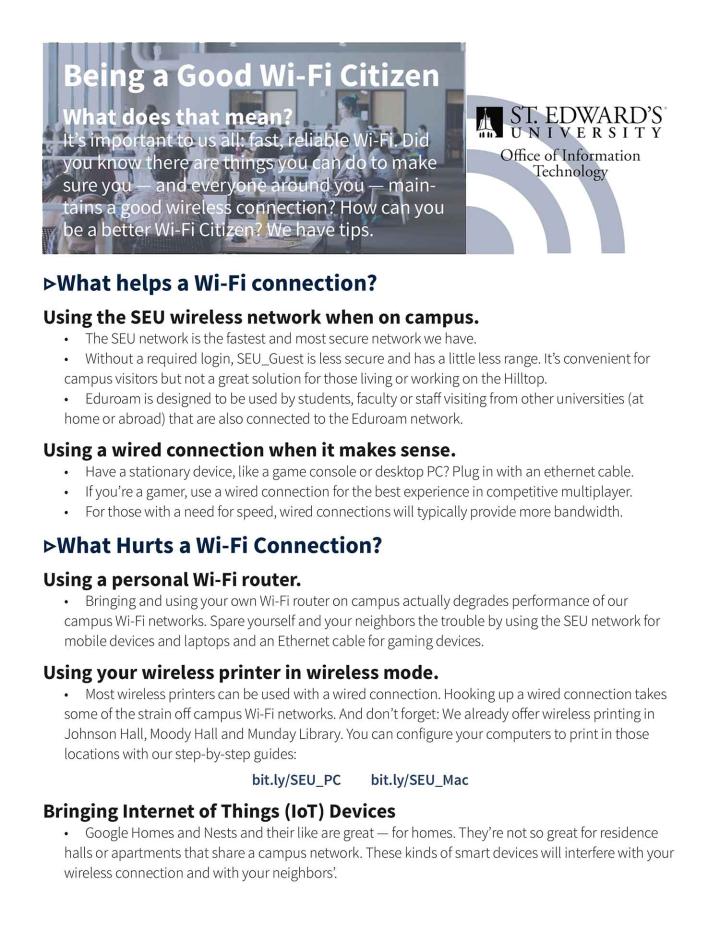Jan. 16, 2018
It wasn't night, and it wasn't all that dark and stormy either. But the day was nonetheless ominous when Paul Miklas and his team set out to solve a mystery in the Maryhill Apartments.
We'd received a report from a student about spotty Wi-Fi in his apartment, but everything looked all right from where we sat.
It wasn't all right, though. Something was terribly, terribly wrong, so we dispatched our crack networking gumshoes to get to the bottom of this wireless dilemma.
The Plot Thickens
Miklas, associate director for Digital Infrastructure, and his team looked high and low and tested using a radio frequency analyzer until, finally, they had the culprit: Google Home.
"Our analyzer visually displayed the frequency of the university network — and the Google Home, sharing the same frequency," Miklas said. "Simply turning off the Google Home device cleaned up this shared frequency and university wireless improved drastically."
There you have it: two powerful tools fighting over the same territory. In this case, the trouble was caused by a Google Home, but any device that uses the same frequency of our university network will behave similarly. That includes the multitude of new smart home devices like Nest thermostats or Hue LED lightbulbs.
Make Yourself (Not Quite) at Home
These Internet of Things (IoT) devices are great for homes, but they're not so great for your campus home, where hundreds of students — not to mention faculty and staff — are trying to connect to the same Wi-Fi. Not only can using this kind of gear on campus hurt your own connection, it can also interfere with your neighbors', too.
Our job is providing you the best, most reliable and fastest Wi-Fi possible. Sometimes that job includes investigative work and sometimes it includes advice on both what to do and what not to do.

Being a Good Wi-Fi Citizen
How can you maintain quality wireless for your neighbors? Read more about our tips.
In terms of what you can do to make sure you and everyone else have a smooth wireless experience, we have a few suggestions.
- Use the SEU wireless network when on campus. If you and your friends and their friends all bring personal Wi-Fi routers, the performance of the main SEU network will be degraded significantly — and that doesn't help you when you're trying to pull up your email in Jo's.
- Use a wired connection when it makes sense. If you have something stationary, like a game console or a desktop computer, plug it in with an Ethernet cable for better speed and connection.
- Adjust power settings when you can. If you have a wireless device that allows you to change power settings, Miklas' advice is to keep in mind, "less is better." "Think of it as a cell: the more power, the larger the cell," he said. "There is no need to have a power setting that would extend out of your personal area."
Need help? Don't ask Alexa. OIT support (and our hardboiled networking detectives) are always ready to give guidance on getting the best signal.
Don't hesitate to reach out at support@stedwards.edu, because nobody wants to be the person who tanked Wi-Fi for their whole residence hall.